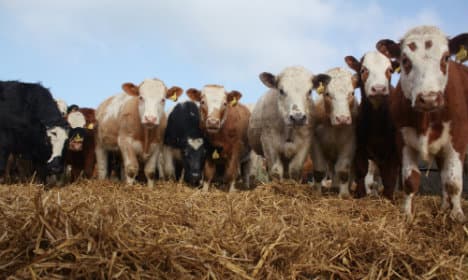Danish firm to export dairy expertise to Africa

Danish company SEGES is set to take advantage of new business opportunities in North Africa by helping the Tunisian dairy industry improve its milk production.
SEGES has agreed a deal, supported by the Ministry of Food and Agriculture, to lend its expertise to the Tunisian dairy industry in order to improve the North African country’s milk production.
High summer temperatures and poor hygiene in stables are key obstacles that must be overcome by the Tunisian producers, who will now be advised by SEGES along with Denmark’s state food regulatory body, Fødevarestyrelsen.
A government grant of 20 million kroner (USD 2.95 million) will support the program, with goals including the creation of new jobs in Tunisia, according to a report by DR.
“After the Arab Spring, new opportunities are needed for young people, along with development of the country,” project leader Jørgen Korning told DR.
The specific tasks that SEGES will assist with include ensuring that milk is kept at the correct temperature during transportation from farms to dairies, as well as ensuring high fat and protein content.
“Small farms are not able to afford refrigeration equipment, so we are looking at whether several can pool together to purchase a unit, so that we can set up a ‘cooling chain’ all the way from dairy to farmer,” said Korning.
“There is a larger market in Tunisian, and milk and milk products are currently imported from the EU, so there is certainly potential for milk production.”
The average herd size on Tunisian farms is three cows, compared to an average of 164 recorded in Denmark in 2013, according to the DR report.
Comments
See Also
SEGES has agreed a deal, supported by the Ministry of Food and Agriculture, to lend its expertise to the Tunisian dairy industry in order to improve the North African country’s milk production.
High summer temperatures and poor hygiene in stables are key obstacles that must be overcome by the Tunisian producers, who will now be advised by SEGES along with Denmark’s state food regulatory body, Fødevarestyrelsen.
A government grant of 20 million kroner (USD 2.95 million) will support the program, with goals including the creation of new jobs in Tunisia, according to a report by DR.
“After the Arab Spring, new opportunities are needed for young people, along with development of the country,” project leader Jørgen Korning told DR.
The specific tasks that SEGES will assist with include ensuring that milk is kept at the correct temperature during transportation from farms to dairies, as well as ensuring high fat and protein content.
“Small farms are not able to afford refrigeration equipment, so we are looking at whether several can pool together to purchase a unit, so that we can set up a ‘cooling chain’ all the way from dairy to farmer,” said Korning.
“There is a larger market in Tunisian, and milk and milk products are currently imported from the EU, so there is certainly potential for milk production.”
The average herd size on Tunisian farms is three cows, compared to an average of 164 recorded in Denmark in 2013, according to the DR report.
Join the conversation in our comments section below. Share your own views and experience and if you have a question or suggestion for our journalists then email us at [email protected].
Please keep comments civil, constructive and on topic – and make sure to read our terms of use before getting involved.
Please log in here to leave a comment.